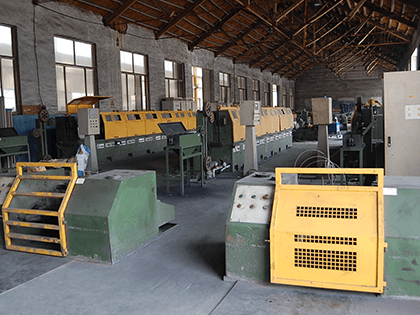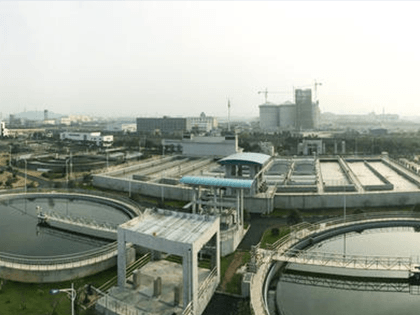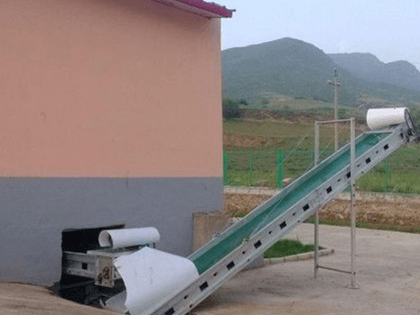The influence of sludge composting to celery and soil
Author: Taida machine Release time:2016-08-23
Reading guidance:With the acceleration of urbanization, sewage treatment plant sewage treatment capacity increase, in our country every year will produce large amounts of sewage sludge, how to dispose of the waste has
With the acceleration of urbanization, sewage treatment plant sewage treatment capacity increase, in our country every year will produce large amounts of sewage sludge, how to dispose of the waste has become a concern of the people. Because of the sewage sludge is rich in organic matter and a large amount of nitrogen, phosphorus and trace elements, the stabilizing treatment of sludge application into soil can increase crop yield, improve soil physico-chemical properties, more and more people tend to sludge utilization in agriculture to be disposed of.
Beijing city sewage sludge of high nitrogen (average 22.5gkg-1) high phosphorus (average 38.8gkg-1), rich in organic matter (average 287gkg-1) low potassium (average 2gkg-1) and heavy metal content with the status of agricultural standards, using pot experiment was conducted to study the effect of Beijing Municipal Sludge in agriculture.
1. Different fertilization treatment cause different influence on the growth of celery
The test soil orders applying sewage sludge compost can meet the demand for the normal growth and development of celery, sludge, in addition to containing nitrogen, phosphorus, potassium and other nutrients, it also contains other substances for the growth of crops and the amount of sludge and urea mixed application will not have a greater impact on the yield of celery, but high dosage of sewage sludge will cause the reduction of output.
Three types of fertilization with the increase of fertilization level, significantly increased the content of nitrate in celery. Fertilization under the nitrate content of celery are almost the same, suggesting that 200g sludge, 4G urea and 200g sludge and 1g urea fertilizer three plants can absorb nitrogen quite. The celery were high and no obvious variation. Sewage sludge compost than fertilizer more to increase crop yields, the application of sewage sludge compost can reduce fertilizer dosage.
2. Phosphorus mineralization characteristics of sludge composting
Both single application of sludge or sludge in urea treatment and with the increase of the amount of sludge, sludge for nitrogen and phosphorus mineralization rate decreased significantly. Sludge compost single application of 50, S100, S200, S400 four fertilization levels sludge nitrogen, phosphate rate of respectively 22.75% and 20.73%, 18.73% and 15.42% and 7.28%, 4.85%, 2.08%, 1.35%, 50 processing and S400 treatment sludge nitrogen mineralization rate compared to reach significant level, and S100, S200, S400 treatment compared to the sludge phosphorus mineralization rate reached the significant level.
Sludge treatment and urea 50 U1 and S100 U1, S200 U1, S400 U1 treatment sludge nitrogen, phosphate rate 26.37%, 22.87%, 15.11%, 13.16% and 7.31%, 4.41%, 2.08%, 1.21%. 50 U1 phosphorus mineralization rate is the highest, and S100 U1, S200 U1, S400 U1 compared all reached significant level. Experience in soil nitrogen mineralization rate of 4.46%.
3. Nitrogen utilization efficiency of different fertilizers
Research will be the input of nitrogen fertilizer, sewage sludge compost nitrogen were combined to calculate on the basis of this, the comparison of different sources of nitrogen into nitrogen use efficiency, the results show that, amount of nitrogen input to 0.15 to 0.38gk-1 soil and input utilization of sludge nitrogen under the conditions of nitrogen rate to higher than that of urea nitrogen, which indicates that the tested sludge organic fertilizer in fertilizer with high nitrogen use efficiency.
4. The influence caused by fertilizer application to soil physical and chemical properties.
Test in both single application of sewage sludge compost and single application of urea or sludge compost urea, with the increase in the amount of fertilizer, soil nitrate nitrogen content increasing. Due to the content of potassium in sewage sludge is low (0.25%), in all treated soil potassium content changed little, only slightly higher than the control treatment, and with the increase of the amount of sludge compost, soil available phosphorus content increased.
In all disposal methods, with the increase of fertilizer, pH value of soil will decrease gradually. In the decomposition process of sludge, organic acid will be produced. the amount of sludge is more, the more organic acid will be produced. The content of potassium doesn’t change a lot in the process of disposing soil. The content of potassium is just a little higher than that in control treatment. With the increase of sludge fertilizer, the content of potassium will increase accordingly.
In all treatment, with the increase in the amount of fertilizer, soil pH value decrease. This may be because the sludge organic fertilizer in the decomposition process to produce organic acids, the greater the amount of sludge generated more organic acids, the soil pH value was lower. NH4 and urea hydrolysis to produce can be through the transformation of the role of bacteria to nitrite or nitrate, and generate h, reduce soil pH value.
Application of sludge compost can greatly improve the soil available nitrogen, phosphorus content, and lead to the decline of soil pH value, a large number of application will also cause the accumulation of soil salinity, soil fertility has a positive effect.
Beijing city sewage sludge of high nitrogen (average 22.5gkg-1) high phosphorus (average 38.8gkg-1), rich in organic matter (average 287gkg-1) low potassium (average 2gkg-1) and heavy metal content with the status of agricultural standards, using pot experiment was conducted to study the effect of Beijing Municipal Sludge in agriculture.
1. Different fertilization treatment cause different influence on the growth of celery
The test soil orders applying sewage sludge compost can meet the demand for the normal growth and development of celery, sludge, in addition to containing nitrogen, phosphorus, potassium and other nutrients, it also contains other substances for the growth of crops and the amount of sludge and urea mixed application will not have a greater impact on the yield of celery, but high dosage of sewage sludge will cause the reduction of output.
Three types of fertilization with the increase of fertilization level, significantly increased the content of nitrate in celery. Fertilization under the nitrate content of celery are almost the same, suggesting that 200g sludge, 4G urea and 200g sludge and 1g urea fertilizer three plants can absorb nitrogen quite. The celery were high and no obvious variation. Sewage sludge compost than fertilizer more to increase crop yields, the application of sewage sludge compost can reduce fertilizer dosage.
2. Phosphorus mineralization characteristics of sludge composting
Both single application of sludge or sludge in urea treatment and with the increase of the amount of sludge, sludge for nitrogen and phosphorus mineralization rate decreased significantly. Sludge compost single application of 50, S100, S200, S400 four fertilization levels sludge nitrogen, phosphate rate of respectively 22.75% and 20.73%, 18.73% and 15.42% and 7.28%, 4.85%, 2.08%, 1.35%, 50 processing and S400 treatment sludge nitrogen mineralization rate compared to reach significant level, and S100, S200, S400 treatment compared to the sludge phosphorus mineralization rate reached the significant level.
Sludge treatment and urea 50 U1 and S100 U1, S200 U1, S400 U1 treatment sludge nitrogen, phosphate rate 26.37%, 22.87%, 15.11%, 13.16% and 7.31%, 4.41%, 2.08%, 1.21%. 50 U1 phosphorus mineralization rate is the highest, and S100 U1, S200 U1, S400 U1 compared all reached significant level. Experience in soil nitrogen mineralization rate of 4.46%.
3. Nitrogen utilization efficiency of different fertilizers
Research will be the input of nitrogen fertilizer, sewage sludge compost nitrogen were combined to calculate on the basis of this, the comparison of different sources of nitrogen into nitrogen use efficiency, the results show that, amount of nitrogen input to 0.15 to 0.38gk-1 soil and input utilization of sludge nitrogen under the conditions of nitrogen rate to higher than that of urea nitrogen, which indicates that the tested sludge organic fertilizer in fertilizer with high nitrogen use efficiency.
4. The influence caused by fertilizer application to soil physical and chemical properties.
Test in both single application of sewage sludge compost and single application of urea or sludge compost urea, with the increase in the amount of fertilizer, soil nitrate nitrogen content increasing. Due to the content of potassium in sewage sludge is low (0.25%), in all treated soil potassium content changed little, only slightly higher than the control treatment, and with the increase of the amount of sludge compost, soil available phosphorus content increased.
In all disposal methods, with the increase of fertilizer, pH value of soil will decrease gradually. In the decomposition process of sludge, organic acid will be produced. the amount of sludge is more, the more organic acid will be produced. The content of potassium doesn’t change a lot in the process of disposing soil. The content of potassium is just a little higher than that in control treatment. With the increase of sludge fertilizer, the content of potassium will increase accordingly.
In all treatment, with the increase in the amount of fertilizer, soil pH value decrease. This may be because the sludge organic fertilizer in the decomposition process to produce organic acids, the greater the amount of sludge generated more organic acids, the soil pH value was lower. NH4 and urea hydrolysis to produce can be through the transformation of the role of bacteria to nitrite or nitrate, and generate h, reduce soil pH value.
Application of sludge compost can greatly improve the soil available nitrogen, phosphorus content, and lead to the decline of soil pH value, a large number of application will also cause the accumulation of soil salinity, soil fertility has a positive effect.
:New disposal method for sludge - bio-film carrier packing :Solution to heavy metal in sludge---add passivator
Relevant news
- 2016-01-12OSC-II Model Sludge Dryer Deliv
- 2016-01-1215T/Day Aerobic Dynamic Ferment
- 2016-01-12Matters Should Be Paid Attentio
- 2016-01-12Methods exploration of chemical
- 2016-01-12Analysis of circulating fluid b
Industry trends
- 2016-01-12Comparison Between Different Sl
- 2016-01-12Adding Calcium and Stable Dispo
- 2016-01-12Sludge Treatment: Methods for S
- 2016-01-12Use Dyeing Sludge As Resource
- 2016-01-12Current situation of sludge dis
Hot spots
Hot-sale products

- Leather Industry Sludge Drying
Production Capacity:1-2200t/h

- Welding Plating Sludge Drying S
Production Capacity:1-2200t/h

- Municipal Sludge Drying Solutio
Production Capacity:1-2200t/h

- Manure Sludge Drying Solution
Production Capacity:1-2200t/h
 中文
中文 English
English Home
Home
